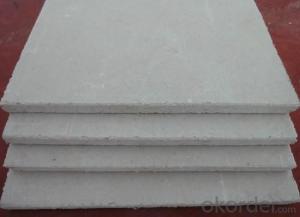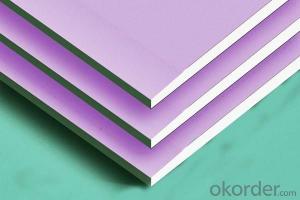The Stainless Steel Rat
The Stainless Steel Rat Related Searches
Best Stainless Steel For Knives Primer For Galvanized Steel H S Code For Stainless Steel Wd 40 For Stainless Steel Spray Paint For Stainless Steel Glue For Stainless Steel Drill Bits For Stainless Steel Spray For Stainless Steel Welder For Stainless Steel Diamond Grinding Wheels For SteelHot Searches
Steel Mesh Panels For Sale Price For Stainless Steel Scrap Scrap Price For Stainless Steel Price For Stainless Steel Stainless Steel Tank For Sale Stainless Steel Sheets For Sale Stainless Steel Tanks For Sale Stainless Steel For Sale Large Led Screens For Sale H4 Led Headlight Bulbs For Sale Used Finger Joint Machine For Sale Aluminum Plate For Sale Near Me Pipe Staging For Sale 6 3 Electrical Wire For Sale Used Power Inverters For Sale Hvac Vacuum Pump For Sale Used Hotel Furniture For Sale Online Used Hotel Furniture For Sale Malaysia Used Hotel Furniture For Sale Singapore Used Hotel Furniture For Sale TorontoThe Stainless Steel Rat Supplier & Manufacturer from China
Okorder.com is a professional The Stainless Steel Rat supplier & manufacturer, offers integrated one-stop services including real-time quoting and online cargo tracking. We are funded by CNBM Group, a Fortune 500 enterprise and the largest The Stainless Steel Rat firm in China.Hot Products
FAQ
- Yes, stainless steel pipes can be used for sewage systems. Stainless steel is highly resistant to corrosion and can withstand the harsh conditions and chemicals found in sewage. It also has a smooth surface, which helps prevent the buildup of waste and reduces the risk of clogging. Additionally, stainless steel pipes are durable and long-lasting, making them a reliable choice for sewage systems.
- There are several different types of stainless steel pipe reducers available on the market. Some of the common types include: 1. Concentric Reducers: These reducers have a symmetrical design and are used to connect pipes of different diameters while maintaining a straight flow. They are most commonly used when there is a need to reduce the pipe size gradually. 2. Eccentric Reducers: Unlike concentric reducers, eccentric reducers have an offset design. They are used to connect pipes of different diameters while also changing the centerline of the pipe. This type of reducer is often used when there is a need to avoid trapping air or fluids in the piping system. 3. Swage Reducers: Swage reducers are a special type of reducer that is used to connect pipes of different diameters, typically in high-pressure applications. They are commonly used in oil and gas industries, as well as in chemical plants, where a smooth transition between different pipe sizes is required. 4. Threaded Reducers: These reducers have threaded ends, allowing them to be screwed onto pipes. They are commonly used in applications where a secure and leak-proof connection is required, such as in plumbing or gas systems. 5. Welded Reducers: Welded reducers are designed to be welded onto pipes. They are often used in applications where strength and durability are essential, such as in industrial settings or high-pressure systems. 6. Socket Weld Reducers: Socket weld reducers are similar to welded reducers but have a socket at one end, allowing them to be easily connected to pipes using a socket weld joint. They are commonly used in applications where a strong and reliable joint is required. It is important to choose the right type of stainless steel pipe reducer based on the specific application and requirements to ensure a proper and efficient connection between pipes of different sizes.
- Yes, stainless steel pipes can be used for petrochemical plants. Stainless steel is highly resistant to corrosion, making it an ideal choice for petrochemical plants where corrosive substances are handled. These pipes are capable of withstanding high temperatures and pressures, making them suitable for the harsh operating conditions of petrochemical plants. Additionally, stainless steel pipes have excellent mechanical properties, which ensure their durability and reliability in such industrial environments. Moreover, stainless steel pipes are easy to clean and maintain, reducing the risk of contamination and facilitating efficient operations in petrochemical plants.
- Stainless steel pipes have several advantages over PVC-U pipes. Firstly, stainless steel pipes are much stronger and have a higher resistance to impact and pressure, making them suitable for high-pressure applications. PVC-U pipes are more susceptible to cracking or bursting under high pressure. Secondly, stainless steel pipes have a higher temperature resistance than PVC-U pipes. They can withstand much higher temperatures without deforming or losing their structural integrity. PVC-U pipes, on the other hand, have lower temperature limits and can become brittle or soften under extreme heat. Additionally, stainless steel pipes have better corrosion resistance compared to PVC-U pipes. They can withstand exposure to various chemicals, acids, and other corrosive substances without degradation. PVC-U pipes are prone to chemical attack and may deteriorate over time if exposed to certain chemicals. However, it is important to note that stainless steel pipes are generally more expensive than PVC-U pipes, which can be a factor to consider when choosing between the two. Ultimately, the choice between stainless steel pipes and PVC-U pipes depends on the specific requirements of the application and the budget constraints.
- Stainless steel why rust?
- In polluted air (such as atmosphere containing large amounts of sulfides, oxides of carbon and nitrogen oxides), condensate is formed when sulfuric acid, nitric acid, and acetic acid are subjected to condensation, resulting in chemical corrosion.
- Yes, stainless steel pipes are highly suitable for brewery applications. Stainless steel is corrosion-resistant, ensuring that the pipes can withstand the harsh chemicals and acids used in the brewing process. It is also easy to clean and maintain, making it ideal for maintaining the hygiene standards required in breweries. Additionally, stainless steel pipes do not impart any taste or odor to the beer, ensuring the quality and purity of the final product.
- To calculate the pipe length required for a specific application, there are several factors that need to be considered. 1. Flow Rate: Determine the desired flow rate or the amount of fluid to be transported through the pipe per unit of time. This can be measured in gallons per minute (GPM), liters per second (L/s), or any other appropriate unit. 2. Pipe Material: Identify the material of the pipe that will be used for the application. Different materials have different friction coefficients, which will affect the overall length required. 3. Friction Loss: Calculate the friction loss in the pipe based on the flow rate and the material properties. This involves determining the friction factor for the specific pipe material and using the appropriate equation (such as Darcy-Weisbach equation or Hazen-Williams equation) to calculate the friction loss. 4. Pressure Drop: Consider the desired pressure drop across the pipe. This is typically specified by the application requirements or system design. The pressure drop can be calculated using the Bernoulli's equation or other relevant equations. 5. Pipe Diameter: Determine the appropriate pipe diameter based on the desired flow rate and the allowable pressure drop. This can be done by using pipe sizing charts or equations specific to the pipe material and the flow characteristics. 6. Pipe Length Calculation: Once the pipe diameter is known, calculate the length required based on the desired flow rate, pressure drop, and the friction loss. This can be done using various pipe sizing equations or software tools available for the specific pipe material. 7. Additional Factors: Consider any additional factors that may affect the pipe length calculation, such as elevation changes, fittings, valves, or other components in the system. These factors may introduce additional friction losses or pressure drops that need to be accounted for. It is important to note that pipe length calculations are typically performed by engineers or professionals with expertise in fluid mechanics and pipe system design. Consulting relevant codes, standards, and guidelines specific to the application is also recommended to ensure compliance with safety and performance requirements.
- Certainly, structural purposes can indeed employ stainless steel pipes. Stainless steel, renowned for its strength, durability, and resistance to corrosion, proves to be an exceptional substance for structural uses. Found commonly in industries like construction, architecture, and engineering, stainless steel pipes serve as structural support and facilitate the conveyance of fluids and gases. They possess the capability to endure heavy loads, extreme temperatures, and even harsh environmental circumstances, rendering them fitting for an extensive array of structural applications. Furthermore, stainless steel pipes offer customization options through various grades, sizes, and thicknesses, enabling them to cater to specific structural prerequisites.












































